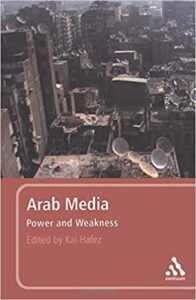Beliefs and Biases
In our reading by Hussein Amin, he states that many viewers of Arab channels owned by the state are aware of the state’s heavy influence of the media and are aware of the bias, and as a result they are often skeptical of the messages they receive from state owned media (Amin 76). In a place like Lebanon where the media is not necessarily owned by the government, but is heavily influenced by the major parties of the region, in what ways do people expect bias, and in what ways are they influenced by it? Just because one expects bias does not mean one is not influenced by it.
Additionally, Amin states that people also look to watch channels that follow their belief system (Amin 76). In what ways do the different party owned media in Lebanon contribute to polarization? In Katharina Notzold’s piece, Notzold states that media stations in Lebanon have contributed in building group identities rather than a national identity due to how each media station caters to a specific group and their beliefs or issues (Notzold 140). While their is an increase in sectarian identity, is their also an increase in a polarization between these identities? Are different groups pulling away from each other ideologically?

Advertising
In Tourya Guaaybess’s chapter, Guaaybess states that advertising is a growing industry in the MENA region, and advertisements in newspapers and broadcasts receive the largest portion of advertising investments (Guaaybess 207). In what ways could this assist in curbing the growing economic problem in Lebanon? Could advertising offer not a solution, but rather some assistance in fixing the economic crisis in Lebanon? Since Lebanon has such a rich diverse media, and media in the MENA region often results in massive net losses, how could advertising help assist in closing the gap between profit and cost? Again, obviously advertising is not a solution to the massive economic crisis in the region, but in what ways could it help lift a burden in the media sector of the economy?
Amin, Hussein. “Arab Media Audience Research: Developments and Constraints.” In Arab Media: Power and Weakness, edited by Kai Hafez, pp. 69-90. New York: The Continuum International Publishing Group.
“Cover of Arab Media: Power and Weakness.” From Amazon Arab Media: Power and Weakness. https://www.amazon.com/Arab-Media-Weakness-Kai-Hafez/dp/0826428363
Guaaybess, Tourya. “Orientalism and the Economics of Arab Broadcasting.” In Arab Media: Power and Weakness, edited by Kai Hafez, pp. 199-213. New York: The Continuum International Publishing Group.
Notzold, Katharina. “The Political Elites’ Dominance over the Visual Space: A Qualitative and Quantitative Content Study of Lebanese Television.” In Arab Media: Power and Weakness, edited by Kai Hafez, pp. 125-144. New York: The Continuum International Publishing Group.